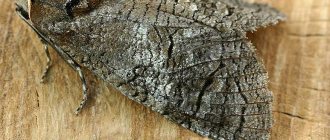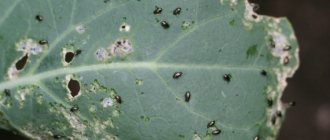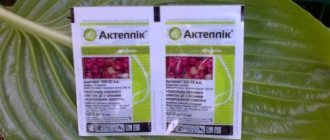general information
For successful reproduction, slugs need moisture and dampness. Therefore, with the onset of twilight, many types of slugs look for favorable places, and the cellar is an ideal place not only for reproduction, but also for life, see the photo on the right.
Pests crawl into the cellar through the vent or cracks. Humid air and optimal (usually about 5°C) temperature allow slugs to lead an active lifestyle here all year round.
Slugs can also get into the cellar on vegetables, for example, hiding in cabbage leaves or remaining unnoticed in a potato tuber. The question arises: “How to get rid of slugs in the cellar?”
Therefore, before sending vegetables for storage, they should be carefully inspected.
We’ll look at slugs and how to deal with them in the cellar below.
Features and methods of struggle
Before you understand how to get slugs out of the cellar, of course, you need to understand what they are. Everything can be done with your own hands and the price will not be high.
You should know that slugs are similar to snails, but when it comes to differences, their shell is either missing or underdeveloped, so you should be able to tell them apart.
- During the winter period, slugs close themselves in fallen leaves, thereby hibernating. Slugs live a short life span of five to seven years, during which time their size reaches fifteen centimeters in length.
Attention: I would like to note that slugs grow up just as quickly, because already at the age of three months they are able to lay offspring, so you need to know this. Slugs lay eggs on the ground to a depth of approximately 20 cm.
- As a result, larvae emerge from the eggs; they, in turn, live in the ground for about two weeks, only after which they emerge to the surface.
- If we talk about an adult, then know that she lays eggs twice a year. So, as soon as you notice the first slugs, you need to immediately fight them.
How to fight?
Controlling slugs in the cellar can include both chemical and mechanical methods. Chemical slug repellents can be purchased at gardening stores. Such preparations are usually scattered on shelves and on the floor of the cellar.
Anti-slug products based on metaldehyde or copper sulfate are prohibited from being used in basements (cellars) and residential premises.
Mechanical control methods involve the construction of traps and barriers for pests. In addition, there are very effective folk remedies for fighting slugs. Read on to find out how to deal with it.
Details about methods of fighting slugs are described here.
Gentle dusting of the cellar
If there are not too many slugs in the cellar yet, you can dust the room with a mixture of ash and chalk, having first removed all the supplies.
But this method of struggle is practically harmless. But it is more suitable for those cellars where the slug invasion is not yet so strong. It consists of complete or partial dusting of the room. Two main compositions can be used as a dusting mixture: a mixture of chalk with wood ash or bleach.
Pre-prepare the room: close all cracks, remove all supplies and existing equipment. After this, dust thoroughly. As a result, the mollusks will curl up and die, and all you have to do is remove them and take them out of the cellar.
It is very important to then treat the walls, floor and ceiling with lime. That is, do the usual whitewashing of your cellar. After this, dry it well and ventilate it. When everything is ready, you can safely bring supplies and tools back into the room.
So, the most effective and sufficiently tested methods for exterminating slugs in the cellar and basement were discussed above. Now you can choose the best option for yourself and get rid of these unpleasant cellar guests for a long time.
Traps in the basement
Many gardeners and summer residents ask the question : “How to get rid of them using a shelter trap?”, “How to destroy them with a beer trap?”, “Slugs, how to deal with them in the basement?” More on this later.
Shelter traps
Boxes with vegetables are lifted up onto shelves, and pieces of linoleum, plywood sheets or any flat material are laid out on the floor.
Gradually, the bottoms of the boxes will begin to dry out, and the slugs will begin to move to the floor in search of more humid shelter. This is where they are collected.
For greater effectiveness, you can put pieces of chopped vegetables and fruits under the traps.
How to protect cabbage and strawberries from slugs?
Slugs' favorite treats are strawberries and cabbage.
Gentle methods of control:
- collect in the morning;
- keep the garden clean;
- rotate vegetable crops in a timely manner;
- attract birds, hedgehogs, frogs, etc. to help.
Mechanical control:
- Place plastic or metal gutters around the perimeter and periodically fill with water.
- Sprinkle between rows: gravel, shells, eggshells, etc.
- Use special granular materials that are scattered around the plantings, and they, in turn, create a barrier.
- Buy plastic rims that are fixed in the ground.
- Install raised beds.
- Make traps.
- Purchase biological control products: powder containing the desired microorganisms is diluted with water and watered over the plantings.
- Apply phytocontrol: planting garlic, herbs, etc.
- Use folk remedies.
The main thing is, of course, prevention. Well, the last thing you need to use is poisoning with chemicals.
How to get rid of slugs on cabbage?
Cabbage is the most favorite delicacy of slugs. Early varieties suffer even when the first leaves are formed.
We start with the correct landing. Plant seedlings at a distance of 50 cm and no more. Such placement will not allow creating favorable conditions for living: shaded, dense, humid areas.
After planting, put a ring on each seedling:
It is more convenient to cut from a 2-liter bottle
The edges should have uneven jagged edges of varying lengths.
The seedlings are carefully threaded into the neck. The jagged edges will easily damage the slug's body if it decides to eat the cabbage.
When the head of cabbage begins to form, the lower leaves, especially those in contact with the ground, must be torn off.
A folk remedy has worked well: fresh wormwood leaves and whole nettles are placed around the cabbage, changing from time to time.
Get rid of it this way:
- water in the evening with water + 50°;
- Cabbage can easily withstand this temperature, but slugs cannot.
Spray with red hot pepper solution:
- grind 80–100 gr. pepper (in pods);
- soak in 1–1.5 liters of water;
- leave for 2–4 days;
- boil for 5–10 minutes;
- leave for 1–2 days.
Mode of application:
- 100 ml of infusion, diluted in 10 liters of water;
- rub some laundry soap there;
- Spray the cabbage.
What to process?
Dusting with lime, as well as a mixture of wood ash and chalk, helps against slugs in the basement.
All vegetables and equipment are removed from the basement and the cracks are sealed. Then thoroughly dust the room. This treatment kills the slugs instantly; they are collected and thrown away.
After dusting, the entire basement is whitewashed with lime. The basement is dried, ventilated and only after that the vegetables are brought back. The dusting method is most effective at the initial stage of slug colonization in the basement.
How to get rid of slugs
First of all, you need to understand that the cellar is a place for storing food, so the use of aggressive, chemical, specialized preparations should be reserved in case the problem cannot be solved otherwise. It's worth starting with the simplest.
Repelling slugs
It’s worth saying right away that this method will only help if there are few slugs. Existing individuals need to be caught and disposed of in any way (burned, crushed or released into the wild away from your site). After this, you need to create barriers for the slugs.
Healthy! To catch slugs, place plastic on the floor overnight and put all food on the top shelves. Since the floor will be a moist and relatively warm environment, the shellfish will collect under the plastic. Early in the morning it will be enough to open it and manually collect the pests.
Since they are mollusks, their belly is very tender and sensitive. Therefore, the slug will never move on a rough surface. Therefore, our goal is to create it. Any finely divided material is suitable for this. For example, you can use coarse sand, the remains of expanded clay, small pieces of concrete or brick. Coarse salt, mustard powder and ash are also suitable. Mollusks cannot move on spruce needles either. All this needs to be filled in at the approaches to the shelves with vegetables and other products. It is also worth pouring out the composition at the entrance to the cellar.
General information about slugs
In order to understand how dangerous such a neighborhood can be, it is worth noting that we are talking about land gastropods. They feel great at temperatures from +15 to +19 degrees. Even though it is colder in the cellar in winter, the slugs are still warmer than outside, where they would die. And in a closed concrete room, they can calmly go into hibernation without fear that they will completely freeze.
Healthy! It is noteworthy that at sub-zero temperatures, adult individuals go into suspended animation and often die. But nothing bad happens to their clutches.
In addition, slugs are hermaphrodites. That is, in order to reproduce, they do not need to “create pairs” of different sexes. Therefore, they can spread with great speed and the destruction of the “queen” does not solve the problem.
The most common slugs found in cellars are:
- forest or garden;
- mesh;
- from Southern Europe.
The latter type is very common today and is the most unpleasant guest for gardeners. The length of an adult mollusk often reaches 15 cm. In addition to the gluttony of the slug (it acts on the principle “whatever I don’t eat, I’ll bite it”), it should be noted that it is toxic. If a pet eats it, there is a risk of serious poisoning.
The mucus of any of these mollusks is an excellent breeding ground for bacteria. Therefore, even if a slug simply “walks” over the tomatoes, they will begin to rot faster.
What does he eat and when is he most active?
Slugs feed on almost everything that gets on their teeth, but most of all they love cabbage, potatoes, tomatoes, and grains. The most important delicacy is the young shoots of grain crops. They only leave garlic, onion, parsley and other spices untouched. For some reason, slugs don't respect cucumbers.
At night, slugs lay eggs, and early in the morning they go in search of food. It is noteworthy that new “slugs” hatch in about 2 weeks. Therefore, it is recommended to persecute such “neighbors” several times. Otherwise, the eggs that did not die during the first events will be given to voracious young animals.
If you do not take any measures, the situation can very quickly worsen. It is better, of course, not to let it come to this and solve the problem immediately with the help of traditional methods and prevention.











